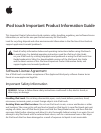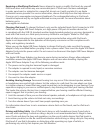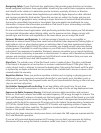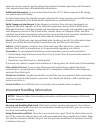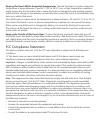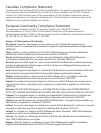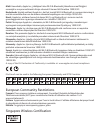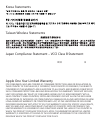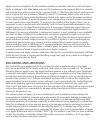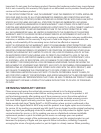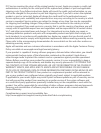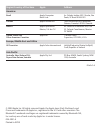Repairing or Modifying iPod touch Never attempt to repair or modify iPod touch by yourself.
iPod touch does not contain any user-serviceable parts. If iPod touch has been submerged
in water, punctured, or subjected to a severe fall, do not use it until you take it to an Apple
authorized service provider. For service information, choose iPod Help from the Help menu in
iTunes or go to www.apple.com/support/ipodtouch. The rechargeable battery in iPod touch
should be replaced only by an Apple authorized service provider. For more information about
batteries, go to:
www.apple.com/batteries
Charging iPod touch To charge iPod touch, only use the included Apple Dock Connector to USB
Cable with an Apple USB Power Adapter, or a high-power USB port on another device that
is compliant with the USB 2.0 standard; another Apple-branded product or accessory designed to
work with iPod touch; or a third-party accessory certied to use Apple’s “Made for iPod” logo.
Read all safety instructions for any products and accessories before using with iPod touch.
Apple is not responsible for the operation of third-party accessories or their compliance with
safety and regulatory standards.
When you use the Apple USB Power Adapter to charge iPod touch, make sure that the power
adapter is fully assembled before you plug it into a power outlet. Then insert the Apple USB Power
Adapter rmly into the power outlet. Do not connect or disconnect the Apple USB Power Adapter
with wet hands.
The Apple USB Power Adapter may become warm during normal use. Always allow adequate
ventilation around the Apple USB Power Adapter and use care when handling. Unplug the
Apple USB Power Adapter if any of the following conditions exist:
The power cord or plug has become frayed or damaged.
Â
The adapter is exposed to rain, liquid, or excessive moisture. Â
The adapter case has become damaged. Â
You suspect the adapter needs service or repair. Â
You want to clean the adapter. Â
Avoiding Hearing Damage Permanent hearing loss may occur if the internal speaker, earbuds,
or headphones are used at high volume. Set the volume to a safe level. You can adapt over time
to a higher volume of sound that may sound normal but can be damaging to your hearing. If you
experience ringing in your ears or mued speech, stop listening and have your hearing checked.
The louder the volume, the less time is required before your hearing could be aected. Hearing
experts suggest that to protect your hearing:
Limit the amount of time you use the internal speaker, earbuds, or headphones at high volume.
Â
Avoid turning up the volume to block out noisy surroundings. Â
Turn the volume down if you can’t hear people speaking near you. Â
For information about how to set a maximum volume limit on iPod touch, see the iPod touch
User Guide.
Driving and Riding Safely Use of iPod touch alone, or with headphones (even if used only in
one ear) while operating a vehicle or riding a bicycle is not recommended and is illegal in some
areas. Check and obey the laws and regulations on the use of mobile devices like iPod touch in
areas where you drive or ride. Be careful and attentive while driving or riding a bicycle. Stop using
iPod touch if you nd it disruptive or distracting while operating any type of vehicle, or
performing any activity that requires your full attention.



